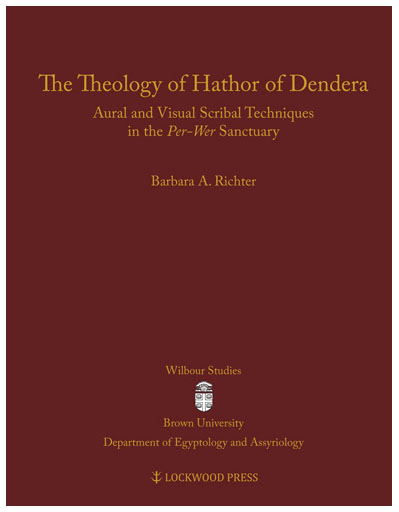

"Gods, Priests, and Bald Men: A New Look at Book of the Dead 103, "Being Beside Hathor." In Malcolm Mosher's The Book of the Dead, Saite through Ptolemaic Periods: A Study of Traditions Evident in Versions of Texts and Vignettes, Prescott, AZ: SPBD Studies, 2019, 519-554.
"The Priesthood of Hathor at Deir el-Medina," in Carol A. Redmount and Deanna Kiser-Go's Wesertkau "Mighty of Kas": Papers Submitted in Memory of Cathleen A. Keller, U.C. Berkeley Publications in Egyptian Archeology, Atlanta: Lockwood Press. In press.
"On the Heels of the Wandering Goddess: The Myth and the Festival at the Temples of the Wadi el-Hallel and Dendera," in Monika Dolinska and Horst Beinlich's 8. Ägyptologische Tempeltagung: Beziehungen zwischen Tempeln, Königtum, Staat und Gesellschaft Früher Hochkulturen 3,3. Wiesbaden, Harrassowitz Verlag, 2010, 155-186, pdf.
"The Amduat and its Relationship to the Architecture of Early 18th Dynasty Royal Burial Chambers," in Journal of the American Research Center in Egypt (JARCE), Vol. 44, 2008, 73-104, pdf.
"A Demotic Marriage Contract: Papyrus Stanford Green Demotic 43," in Mark Depauw, Joseph Manning, and Arthur Verhoogt's Stanford Papyri, Papyrologica Lugduno-Batava, Leiden. Forthcoming.
The Ptolemaic period witnessed an enormous increase in the number of hieroglyphic signs and iconographic elements (composite crowns, scepters, and cult objects). The ancient scribes exploited this complexity when composing the reliefs used in temple decoration, selecting particular words, hieroglyphic signs, and iconographic elements in order to create interconnected multiple layers of meaning, forming a tapestry of sound and sight. The Theology of Hathor of Dendera examines these techniques on both micro- and macro-levels, from their smallest details to their broadest thematic connections, foregrounding individual techniques to determine the words and phrases singled out for emphasis. By synthesizing their use in the three-dimensional space of the most important cult chamber in the Temple of Hathor at Dendera, this new method of analysis not only reveals the most essential characteristics of the local theology, but also shows how the ancient scribes envisioned the universe and the place of humankind within it.